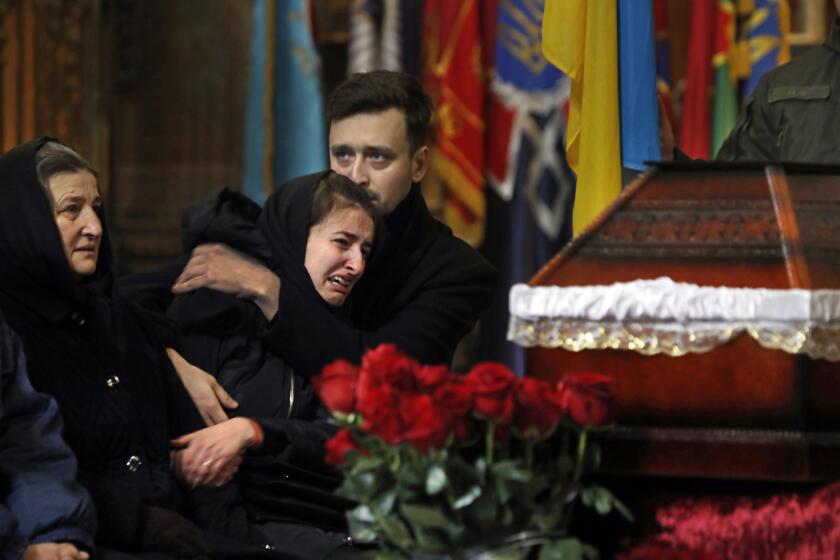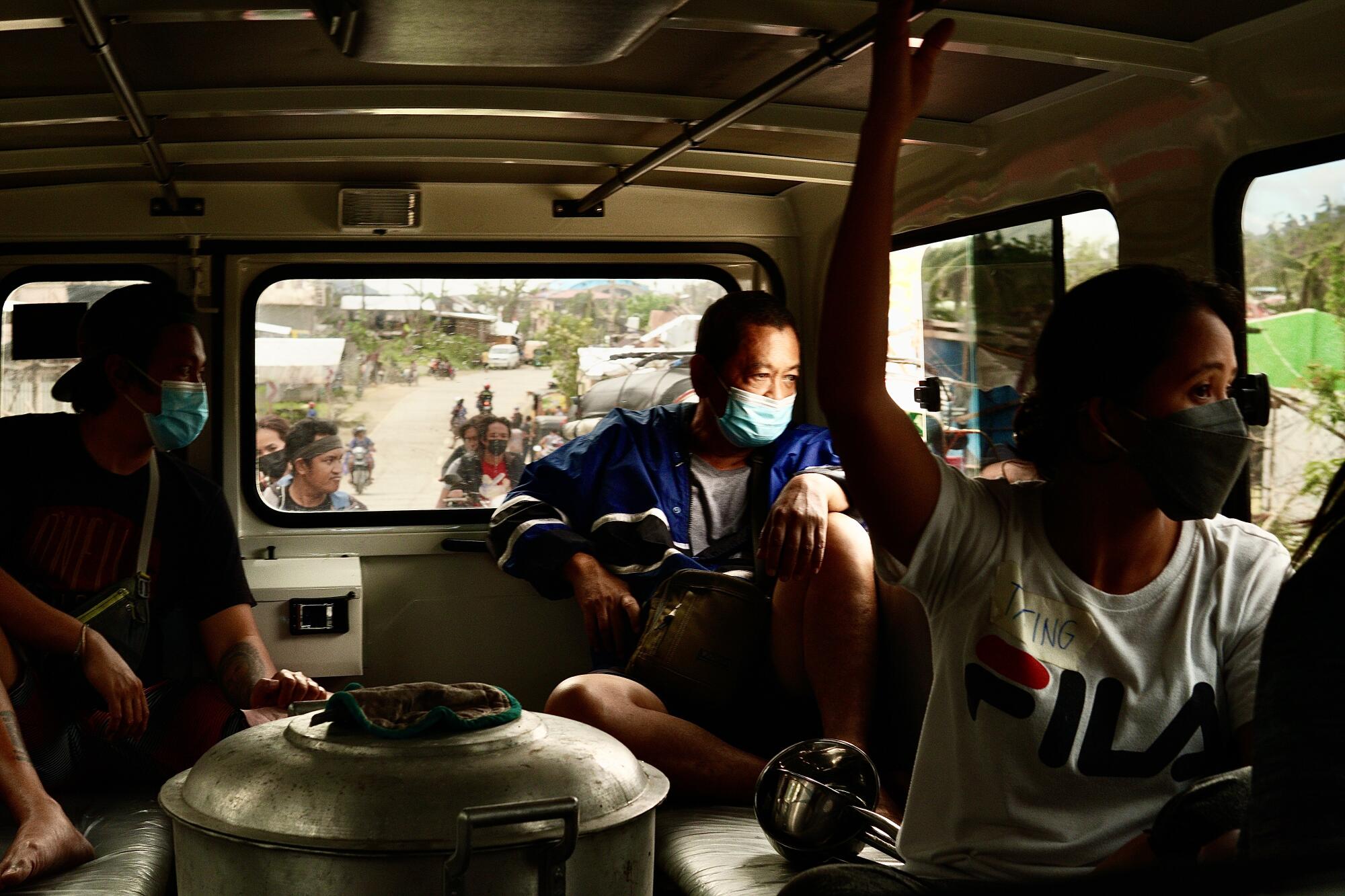
- Share via
DINAGAT ISLANDS, Philippines — Alex Baluyut and Precious Leano were still feeding families displaced by late September’s super typhoon Noru when news came that another powerful storm, Nalgae, was on a collision course for the Philippines.
The husband-and-wife founders of Art Relief Mobile Kitchen, a volunteer group that provides hot meals in the aftermath of disasters, quickly tacked to the impending catastrophe, checking maps and satellite images to predict its destructive path.
For the following three days, starting Oct. 26, Nalgae pummeled Luzon, the country’s largest island group, triggering landslides and severe floods that left 150 people dead, dozens missing and nearly 4 million people without housing.
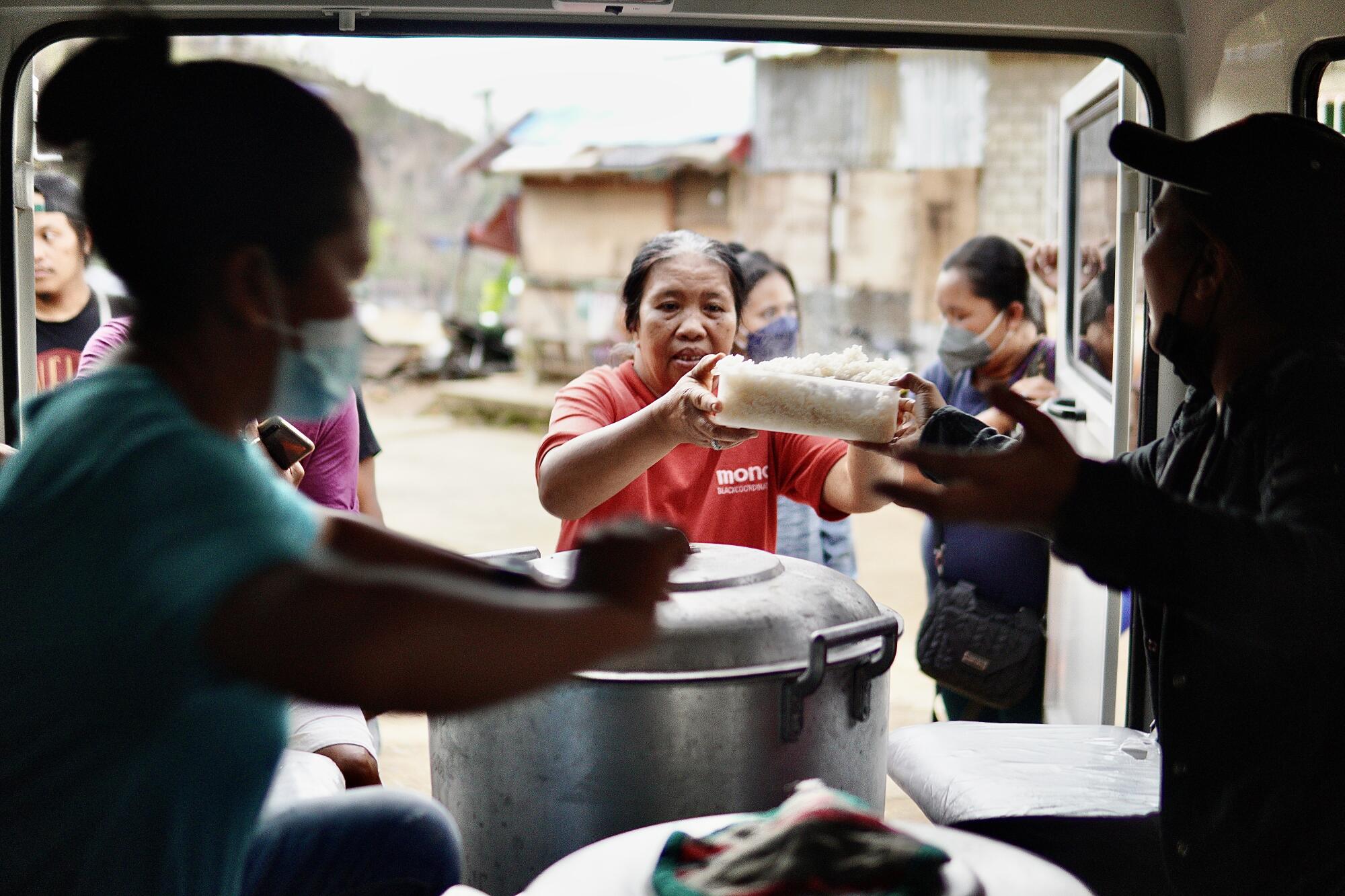
In its wake, Art Relief Mobile Kitchen volunteers pulled together pots, pans and locally sourced meat and vegetables to dish out heaping portions of pork stew, steamed rice and other regional favorites for thousands of weary victims.
“When you are in a state of calamity and faced with the pressure of rebuilding a roof over your family’s head, the last thing you want to think about is how or when to cook,” said Baluyut, 66, whose group sets itself apart by serving hot, fully prepared popular dishes rather than distributing canned food and dried grains.
The Times’ Carolyn Cole is on the ground in Ukraine as residents prepare for winter’s cold amid Russian missile strikes against the nation’s infrastructure.
That’s no small detail in a country hit by as many natural disasters as the Philippines. The nation of 110 million sits along a conveyor belt of fierce ocean storms and rests precariously above the Pacific “Ring of Fire,” a blistering path of seismic activity responsible for earthquakes and volcanic eruptions.
An average of 20 tropical cyclones a year enter the vast swath of the Northwestern Pacific that encompasses the Philippines. Five out of the world’s 11 most powerful tropical cyclones in history made landfall in the country.
In a country where a quarter of the population lives below the poverty line, the government has long struggled to provide adequate emergency relief. Much reliance has been placed on the military and police, as well as large nonprofit humanitarian organizations such as the Red Cross. Over the last decade, proactive preparedness in the form of early warning systems and preemptive evacuations have increasingly come to the fore. But the country’s entrenched patronage politics has made that transition difficult.

Natural disasters provide lawmakers opportunities to burnish their image and to pocket kickbacks. It’s not uncommon for evacuation centers and relief goods to be plastered with images of politicians. Several government leaders have been charged with stealing relief funds. Even the country’s mobile disaster warning system earned flak this year for triggering cellphone alerts to promote the candidacy of now President Ferdinand Marcos Jr.
Baluyut and Leano wanted to bring heightened credibility to disaster response. The idea for the mobile kitchen was hatched in 2013, not by a natural calamity but armed conflict. Fighting had erupted in the southern city of Zamboanga between the military and separatists belonging to the Moro National Liberation Front.
Thousands were displaced and Baluyut, a photojournalist regularly exposed to the miseries of war and disasters, was deeply moved by their plight. As a native of Pampanga, the culinary capital of the Philippines, he worried about what they’d eat and he pledged to help feed people the next time disaster struck.
Weeks later, one of the strongest cyclones on record made landfall in the Philippines. What would later be known as Super Typhoon Haiyan flattened long stretches of the archipelago nation, killing 6,000 people and displacing 4.1 million.
“We have to do it now,” Baluyut remembers telling Leano.
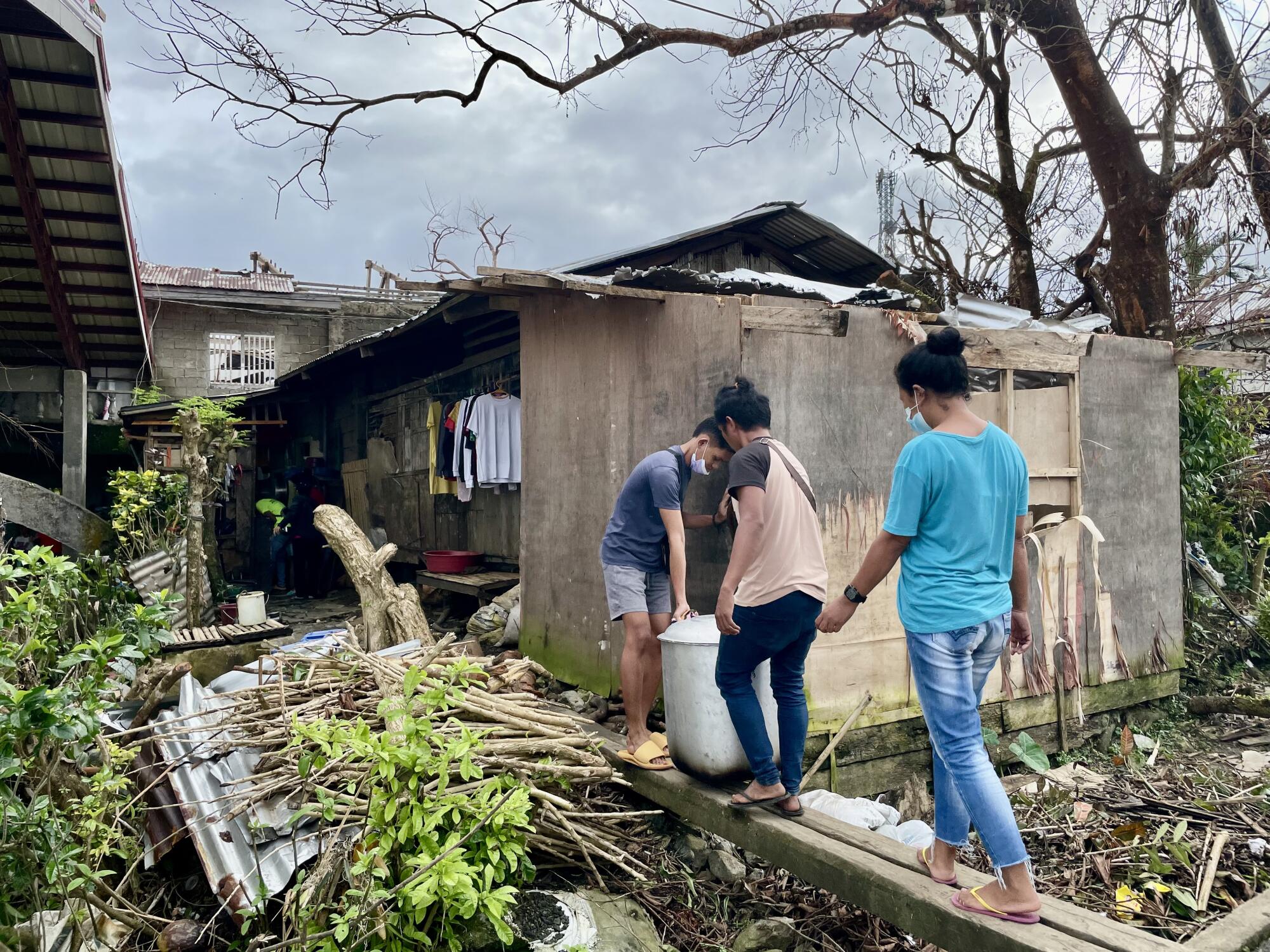
The couple had only about $90 between them at the time. They pooled it with donations to buy rice and made lugaw, a porridge that serves as a cheap comfort food.
The pair set up their mobile kitchen with a handful of volunteers under a lamppost inside a military air base in Manila serving as a staging area for survivors. Everything was going to plan until the first person ambled up to Leano with dazed eyes and said, “Lugaw again?”
That encounter changed the couple’s operation for good.
“I felt so stupid,” said Leano, 56, a stage actress. “Why didn’t I think of that? Here are people who have been eating porridge since the storm wiped out their homes and here we are giving them a bowl of porridge again.”
The pair solicited philanthropists, church groups and farmers to help provide fresh meat and vegetables — anything but lugaw or the canned sardines, canned meatloaf or dried noodles doled out by government workers. They also put out a call for volunteers, recruiting activists and artists alike, which is how they came up with the group’s name.
Their aim, Leano said, was to ensure that people had access to a plate of warm food like turmeric rice, or binagoongan baboy (pork in shrimp paste) to comfort them in a time of distress.
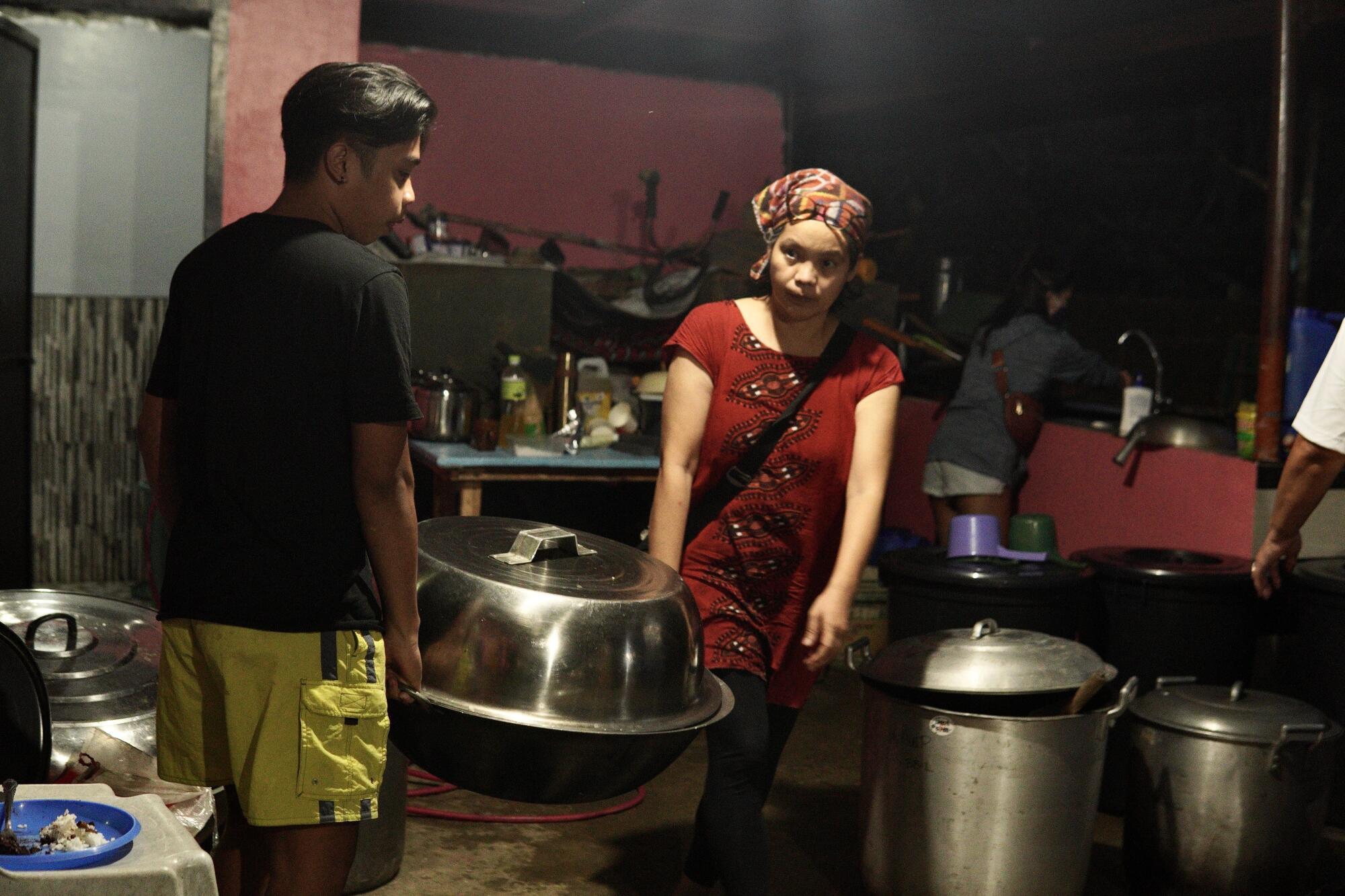
The Badlaan family had not eaten a proper meal in almost a month after their village in the central Philippine province of the Dinagat Islands was badly damaged by Typhoon Rai last December.
When Art Relief Mobile Kitchen arrived in a white truck containing a pot of freshly cooked pork sinigang, a hearty tamarind-flavored soup, the response was decidedly lukewarm until Benjie Badlaan, 13, came home with a pitcher. It left his family in disbelief.
“Is that really sinigang?” Annabel Badlaan, the family’s 32-year-old matriarch, said as tears welled in her eyes.
“We have meat for dinner,” the other children cheered.
Baluyut and Leano said it is pointless dropping off dried food like rice or beans to families in the early stages of a disaster because homes or kitchens are usually in disarray. Any reminder of their inability to cook only amplifies their feeling of helplessness, they reasoned.
The couple’s empathy and sensitivity also extends to the dishes they choose to cook.
In the predominantly Muslim city of Marawi in the southern Philippines, the group tapped local cooks and prepared halal food for people whose homes were destroyed by fighting between the military and Islamic State militants.
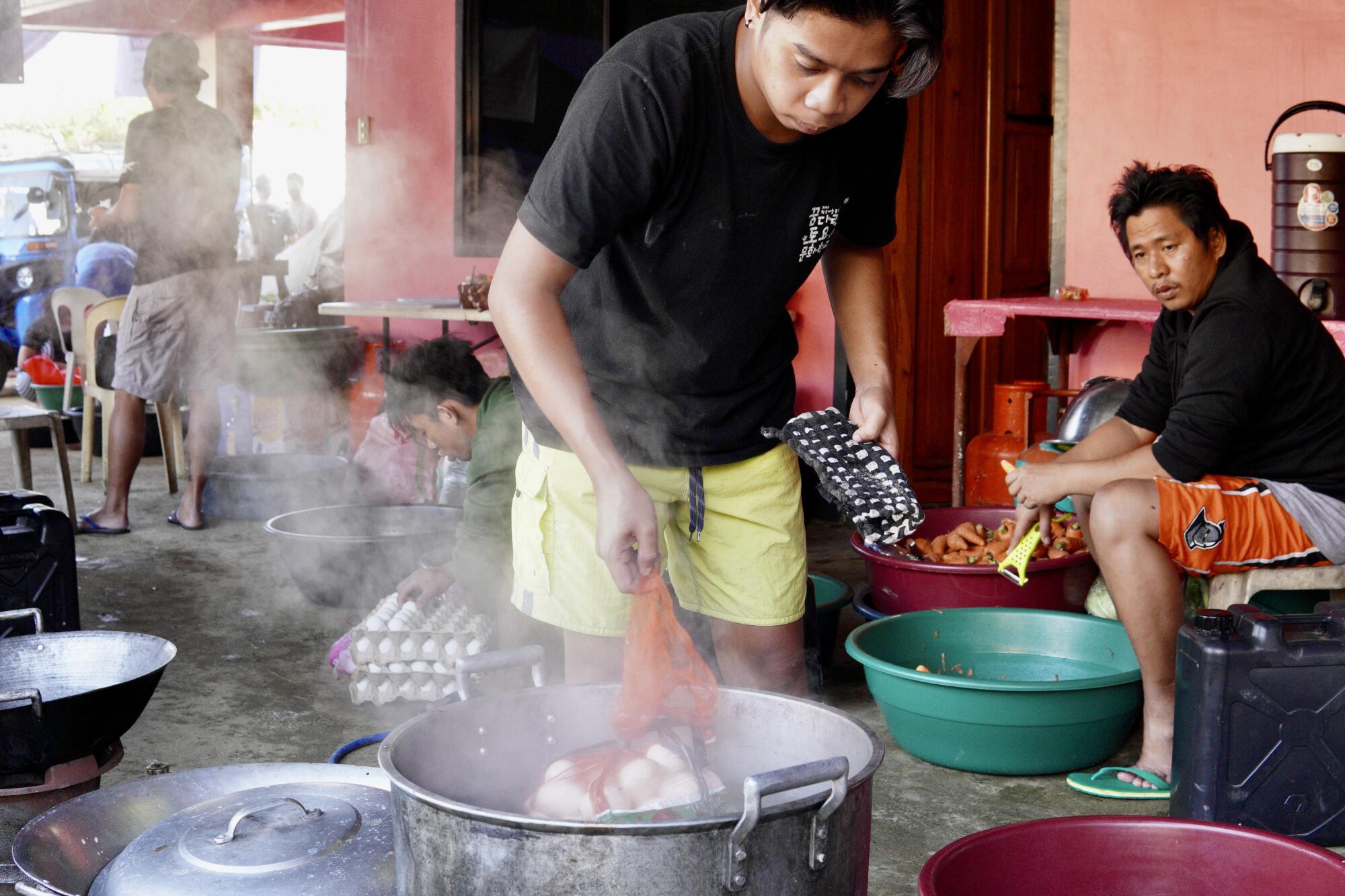
In the northern city of Cavite, volunteers cooked locally popular binagoongang baboy for evacuees of a massive residential fire. In Santa Clara, a city in southern Luzon, pork was omitted from meals because many evacuees from a fire there were Seventh-day Adventists.
The volunteers try to buy ingredients from local farmers and vendors to stimulate the economy. They also ask local cooks to lend a hand.
The close proximity to some of the country’s most devastating events is not without danger. Baluyut barely escaped a bomb explosion in Marawi. Volunteers have had the misfortune of witnessing people buried by landslides.
The COVID pandemic took a toll on the group’s donations. But in 2021, word of Baluyut and Leano’s work helping victims of Typhoon Rai reached World Central Kitchen, the disaster relief program run by celebrity chef Jose Andres. Andres’ program agreed to partner with Art Relief Mobile Kitchen to feed victims.
Baluyut and Leano’s group has since expanded to include chapters in Tacloban, Davao, Surigao del Sur, Iligan, Zamboanga and the couple’s base in Los Baños, roughly 30 miles south of Manila. They estimate they’ve served several hundred thousand meals.
“There are ARMK kitchens all over the country that can respond to disasters,” said Leano, whose ultimate goal is to inspire the government to establish community kitchens in every village jurisdiction, known as barangays, so that her organization is made redundant.
“Community kitchens are natural to us,” Baluyut said. “Every barangay had specialty cooks who were called upon during happy occasions like fiestas and weddings. It’s just a matter of harnessing this cultural tradition.”
More to Read
Sign up for Essential California
The most important California stories and recommendations in your inbox every morning.
You may occasionally receive promotional content from the Los Angeles Times.
